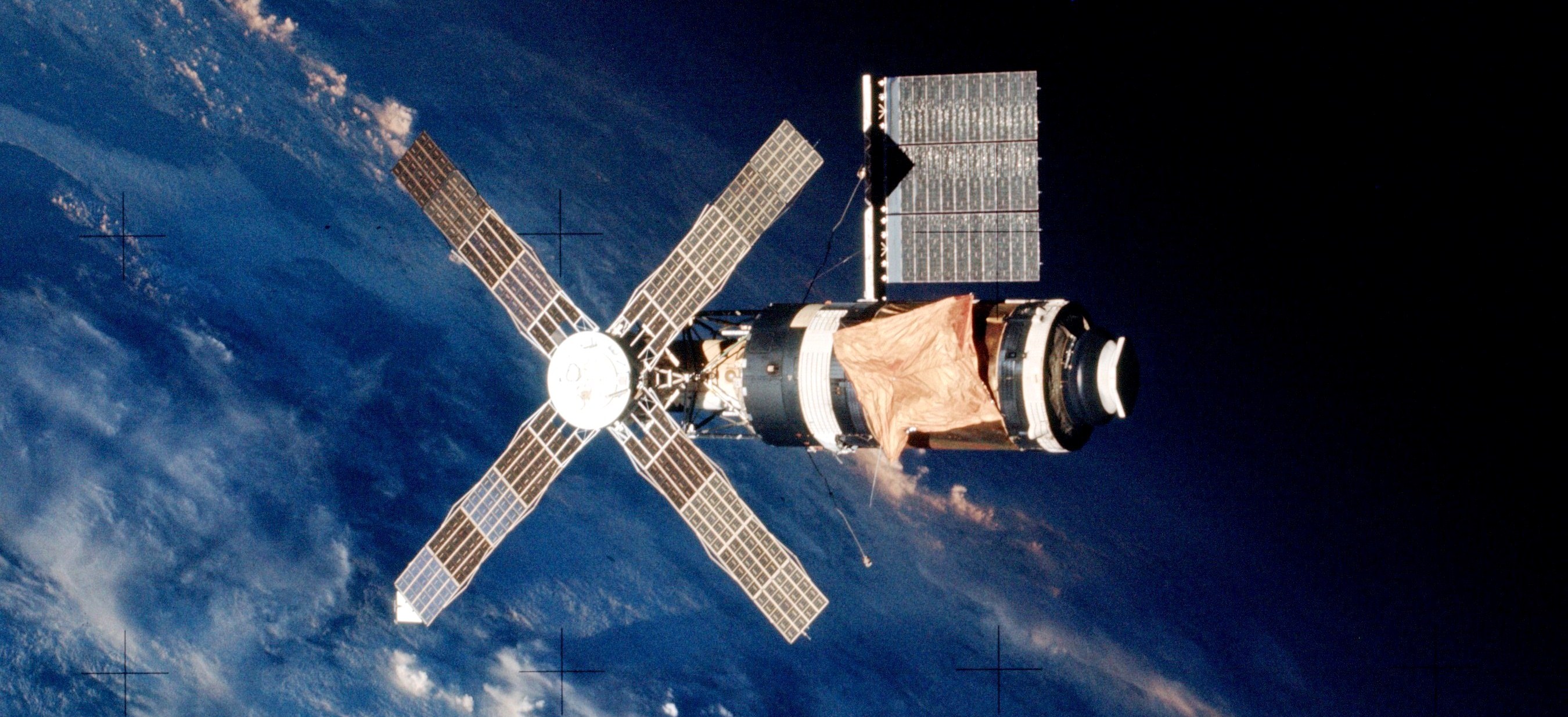Speculation was rife 40 years ago today about just where the US space laboratory Skylab 1 would fall back to earth.
Only two days previously a NASA spokesman predicted parts of the abandoned space station could impact near “the edge of Cornwall”, causing some alarm in Southern England. With all the world to go at, the chances of debris landing in populated areas was actually very slim indeed.
 Skylab (pictured) was launched six years previously, in May 1973, and was meant to remain in space, orbiting Earth, well into the mid-1980s. The space laboratory was lived in by three teams of astronauts for periods of up to 84 days as they carried out various experiments, including analysis of the sun’s activity and how it affected the Earth. The missions were also designed to test human endurance in space, especially the effects of protracted periods of weightlessness on the human body.
Skylab (pictured) was launched six years previously, in May 1973, and was meant to remain in space, orbiting Earth, well into the mid-1980s. The space laboratory was lived in by three teams of astronauts for periods of up to 84 days as they carried out various experiments, including analysis of the sun’s activity and how it affected the Earth. The missions were also designed to test human endurance in space, especially the effects of protracted periods of weightlessness on the human body.
However, continual technical problems combined with diminishing funding for the American space programme meant that the last crew abandoned Skylab in February 1974, less than a year after its launch. After that it spent the next five years orbiting Earth, with each orbit bringing it fractionally closer to the planet’s gravitational pull, and the inevitable conclusion that sooner or later it would plunge to Earth.
At 77.5 tons that was a potentially daunting prospect! The space station was expected to break up on re-entry into as many as 500 pieces, most of which would burn up in the atmosphere. However, several larger components were expected to survive the heat of re-entry and impact on the planet’s surface. Among them were a 2.3 ton airlock shroud and a 1.7 ton film storage safe, made from lead to protect the film from radiation.
After completing 34,981 orbits, the abandoned Skylab started to tumble back to Earth on the evening of July 11th. By then it seemed likely it would come down over the Southern Indian Ocean, but all 22 states in India were put on full alert. India’s civil aviation authority also placed a temporary ban on flights across the sub-continent for fear of falling debris bringing down an aircraft.
In the event, India was spared, with debris falling in the ocean and in a sparsely populated region of Western Australia. Residents of Kalgoorlie – 370 miles northeast of Perth – reported seeing falling debris as burning objects lighting up the night sky. Over the following days and weeks several pieces were found spread across a strip of land around 100 miles wide. One of the largest was a three-foot-long chunk of twisted metal found by a golf course groundskeeper from Albany in Western Australia.
The demise of Skylab marked a low point in the American space programme. The development of the Space Shuttle – the first ‘re-usable’ spacecraft able to return to Earth and land on a runway like a conventional aircraft – had been plagued with technical problems and seriously delayed. It had been hoped to use the Space Shuttle to transport astronauts to Skylab 1 to recommission it.
Since Skylab, dozens of other satellites, capsules and even space stations have been brought down from space by mission controllers, but in a far more managed and predictable way, using carefully chosen crash sites in very remote locations. Despite its short time in service, Skylab is also credited with paving the way for later laboratories in space, including the International Space Station, where British astronaut Tim Peake lived and worked for 185 days between December 2015 and June 2016.
